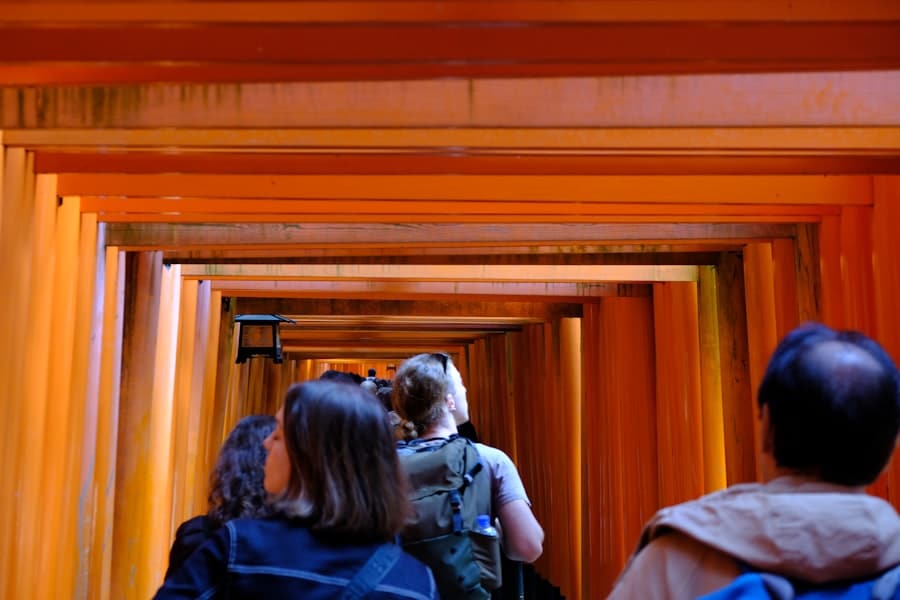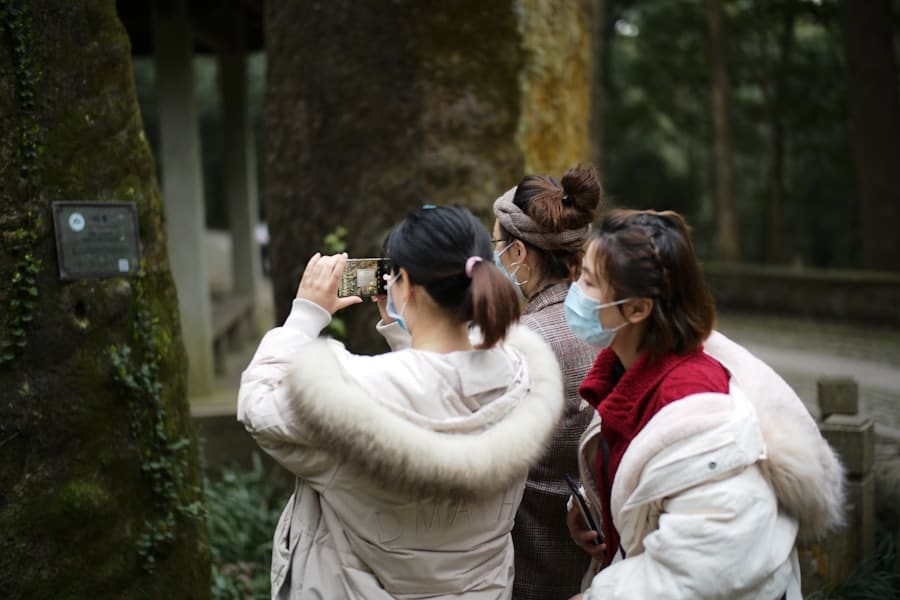Virtual Reality (VR) guided tours have revolutionized the way we experience travel and exploration. By immersing users in a 360-degree environment, VR technology allows individuals to traverse iconic landmarks, historical sites, and natural wonders without ever leaving their homes. This immersive experience is not merely about visual engagement; it encompasses auditory and tactile sensations that create a sense of presence.
For instance, when a user dons a VR headset to explore the ancient ruins of Machu Picchu, they can hear the sounds of nature, feel the atmosphere of the site, and even interact with elements of the environment, such as picking up virtual artifacts or navigating through narrow pathways. This level of engagement fosters a deeper connection to the location, making it feel more real and immediate. Moreover, VR guided tours can be enhanced with narrative storytelling, where guides or narrators provide context and history about the sites being visited.
This combination of immersive visuals and informative audio creates a rich tapestry of experience that traditional travel methods often lack. For example, a VR tour of the Louvre Museum not only allows users to view masterpieces like the Mona Lisa but also provides insights into the artist’s life, the historical context of the painting, and the significance of its location within the museum. Such experiences can evoke emotions and inspire curiosity, making users feel as though they are part of a larger story rather than passive observers.
Key Takeaways
- VR guided tours offer an immersive and realistic experience, allowing users to feel like they are actually at the destination.
- VR tours are a cost-effective and convenient alternative to traditional travel brochures, saving time and money for both travelers and travel companies.
- VR tours provide accessibility for all, including those with physical limitations, by allowing them to virtually visit destinations they may not be able to physically travel to.
- VR tours help reduce the environmental impact by eliminating the need for printed materials, contributing to a more sustainable travel industry.
- VR tours offer customization and personalization, allowing users to tailor their experience to their preferences and interests.
Cost-Effective and Convenient Alternative to Travel Brochures
In an age where digital solutions are increasingly favored over traditional methods, VR guided tours present a cost-effective alternative to conventional travel brochures. Traditional brochures often require significant resources for design, printing, and distribution. In contrast, VR tours eliminate these costs by providing a digital platform that can be easily updated and shared across various devices.
This not only reduces expenses for travel companies but also allows them to allocate resources more effectively towards enhancing the quality of their offerings. Furthermore, VR guided tours offer unparalleled convenience for users. Instead of sifting through stacks of brochures or navigating complex websites, travelers can access immersive experiences at their fingertips.
With just a VR headset or even a smartphone, users can explore destinations from anywhere in the world. This convenience is particularly beneficial for those who may be planning trips or researching potential destinations. For instance, a family considering a vacation in Italy can take a virtual tour of Venice’s canals or Florence’s art scene before making any commitments.
This ability to preview experiences helps travelers make informed decisions while saving time and money.
Accessibility for All: Overcoming Physical Limitations

One of the most significant advantages of VR guided tours is their ability to make travel experiences accessible to individuals with physical limitations. Traditional travel often poses challenges for those with mobility issues, chronic illnesses, or disabilities that hinder their ability to explore certain locations. VR technology breaks down these barriers by allowing users to experience destinations that may otherwise be difficult or impossible to visit in person.
For example, individuals who use wheelchairs can virtually navigate through the Colosseum in Rome or stroll along the Great Wall of China without facing physical obstacles. Additionally, VR guided tours can cater to diverse needs by offering customizable experiences. Users can choose different modes of exploration based on their preferences or requirements.
For instance, someone with visual impairments might benefit from audio descriptions that guide them through a virtual environment, while others may prefer a more interactive experience that allows them to engage with visual elements.
Environmental Impact: Reducing the Need for Printed Material
The environmental implications of traditional travel practices are becoming increasingly apparent as concerns about sustainability grow. The production and distribution of printed travel materials contribute to deforestation, pollution, and waste generation. In contrast, VR guided tours offer a sustainable alternative by significantly reducing the need for printed brochures and promotional materials.
By transitioning to digital platforms, travel companies can minimize their ecological footprint while still providing valuable information to potential travelers. Moreover, VR technology encourages responsible tourism by promoting awareness of environmental issues associated with travel. For instance, virtual tours can highlight conservation efforts in fragile ecosystems or educate users about the impact of overtourism on popular destinations.
By immersing users in these narratives, VR guided tours can inspire more conscientious travel behaviors when individuals do choose to visit these locations in person. This shift towards sustainability not only benefits the planet but also aligns with the growing demand for eco-friendly practices among consumers.
Customization and Personalization for a Unique Experience
The ability to customize and personalize experiences is another compelling aspect of VR guided tours. Unlike traditional travel brochures that present a one-size-fits-all approach, VR technology allows users to tailor their journeys according to their interests and preferences. For example, a user interested in art history can select a tour that focuses specifically on famous artworks within a museum, while another user may prefer an exploration centered around architectural marvels or culinary experiences.
This level of personalization extends beyond mere content selection; it also encompasses user interaction within the virtual environment. Travelers can choose their own paths through a destination, interact with specific elements that pique their interest, and even engage with other virtual travelers in real-time. This interactivity fosters a sense of agency and ownership over the experience, making it feel uniquely theirs.
As users curate their journeys based on personal interests, they are more likely to retain information and develop a deeper appreciation for the cultures and histories they encounter.
Engaging and Interactive Learning Opportunities

VR guided tours are not just about visual stimulation; they also provide engaging and interactive learning opportunities that enhance educational experiences. By immersing users in realistic environments, VR technology facilitates experiential learning that goes beyond traditional classroom settings. For instance, students studying ancient civilizations can take virtual field trips to archaeological sites like Pompeii or Petra, allowing them to observe artifacts and structures in their original contexts.
Interactive elements within VR tours further enrich the learning experience. Users can participate in quizzes, challenges, or simulations that test their knowledge and encourage active engagement with the material. For example, during a virtual tour of the Smithsonian National Air and Space Museum, users might be prompted to identify key historical events related to aviation or space exploration as they navigate through exhibits.
This hands-on approach not only reinforces learning but also fosters curiosity and critical thinking skills.
Real-Time Updates and Dynamic Content
One of the standout features of VR guided tours is their ability to provide real-time updates and dynamic content that keeps experiences fresh and relevant. Unlike static brochures that become outdated quickly, VR platforms can be continuously updated with new information, features, and enhancements. This capability is particularly valuable in the travel industry, where conditions at destinations can change rapidly due to factors such as weather events, construction projects, or cultural festivals.
For example, if a popular tourist attraction undergoes renovations or introduces new exhibits, VR tour providers can promptly update their content to reflect these changes. Users can then access accurate information about what to expect during their visits without relying on outdated materials. Additionally, real-time updates can include notifications about special events or promotions happening at specific locations, allowing travelers to plan their itineraries more effectively.
Potential for Future Growth and Expansion in the Travel Industry
As technology continues to advance at an unprecedented pace, the potential for growth and expansion of VR guided tours within the travel industry is immense. With increasing accessibility to high-quality VR equipment and software development tools, more companies are likely to enter this space, offering innovative solutions that cater to diverse audiences. The integration of artificial intelligence (AI) could further enhance these experiences by providing personalized recommendations based on user preferences and behaviors.
Moreover, as global travel patterns evolve post-pandemic, there is an opportunity for VR guided tours to play a pivotal role in reshaping how people explore new destinations. As travelers seek safer alternatives or wish to supplement their physical journeys with virtual experiences, VR technology can bridge the gap between aspiration and reality. The potential for partnerships between travel agencies, educational institutions, and cultural organizations could lead to collaborative efforts that expand the reach and impact of VR guided tours.
In conclusion, as we look toward the future of travel and exploration, it is clear that VR guided tours represent a transformative force within the industry. By offering immersive experiences that are cost-effective, accessible, environmentally friendly, customizable, engaging, and dynamic, they have the potential to redefine how we connect with our world. As technology continues to evolve and adapt to changing consumer needs, the possibilities for growth in this sector are boundless.
In the rapidly evolving landscape of travel and tourism, virtual reality (VR) guided tours are emerging as a powerful tool, often outperforming traditional travel brochures. This shift is largely due to the immersive experience VR offers, allowing potential travelers to explore destinations in a more engaging and interactive manner. A related article that delves into the transformative potential of technology in enhancing user experiences is com/unlock-a-new-world-of-possibilities-with-samsung-galaxy-z-fold4/’>Unlock a New World of Possibilities with Samsung Galaxy Z Fold4.
This piece explores how innovative devices like the Samsung Galaxy Z Fold4 are opening up new avenues for digital interaction, much like how VR is revolutionizing the way we experience travel planning.
FAQs
What are VR guided tours?
VR guided tours are virtual reality experiences that allow users to explore and interact with a digital recreation of a real-world location. These tours are typically created using 360-degree photography or videography, and can be accessed through VR headsets or other devices.
How do VR guided tours outperform travel brochures?
VR guided tours outperform travel brochures by providing a more immersive and interactive experience for users. Instead of simply looking at static images and reading descriptions, users can feel like they are actually in the destination, allowing for a more engaging and memorable experience.
What are the benefits of VR guided tours over travel brochures?
Some benefits of VR guided tours over travel brochures include the ability to explore a destination from multiple angles, the feeling of presence and immersion, and the ability to interact with the environment in a way that is not possible with traditional brochures.
How are VR guided tours changing the travel industry?
VR guided tours are changing the travel industry by providing a new way for travelers to research and experience destinations before they visit. This can lead to more informed decision-making and a better overall travel experience.
Are VR guided tours accessible to everyone?
While VR guided tours do require access to VR headsets or other devices, many tours can also be accessed through a web browser or mobile device, making them accessible to a wider audience. Additionally, some travel agencies and tourism organizations are making VR experiences available in physical locations for those without personal devices.

